Cameras are optical instruments used for capturing photographs and moving visuals.
Digital cameras got its name so from the purely electronic operations happening inside to deliver a soft copy of your photo instead of the chemical reactions on physical film rolls which had been ubiquitous in the past with the older generation of cameras.
With the advent of these digital cameras, the size, shape and the resolution of the photographs saw a massive enhancement in quality.
The near instant photo output and accompanying wireless connectivity are just some of the accompanying benefits that come with a digital camera.
Why know the different type of digital cameras?
What we said on the introduction is just the tip of the iceberg that is commonly known to the public regarding the digital cameras.
And that led us to think – why don’t we write a comprehensive article describing the different kinds of digital cameras available in the market, which will help an average consumer know about these technologies in detail.
Knowing these cameras up close will definitely help you to make a better purchase decision as different types of cameras cater to specific purposes.
You don’t have to spend a fortune just for causal clicks that are to be uploaded in the social media networks.
Likewise, if you are planning to go professional, you shouldn’t even think of a point and shoot camera to do the job for you.
Grab a cup of your favourite beverage and read along as we present to you the most definitive guide about various types of digital cameras and their use cases in detail!
History of Cameras
Humans have always been fascinated by the nature around him since his inception.
With no technologies available at the time to document the events, he used to engrave the happenings in the walls of the caves he used to live in.
These cave documents later became the cornerstones for us to understand the past – from the types of animals our ancestors reared, types of food they had, God’s they had worshipped, things they have seen and such.
It may seem silly now, but without these carving and paintings, we would have had tough times understanding the past, just with a few fossils buried from beneath the Earth.
Documentation is what we are coming to talk about and cameras play an important role in this regard.
The first ever real camera that is documented is the “Camera Obscura”, which roughly translates in to “Dark Room” in Latin.
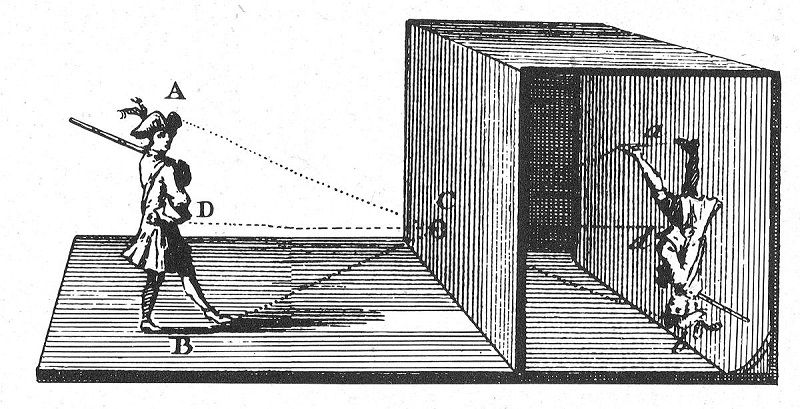
Camera Obscura was a kind of pinhole camera, which was a dark box with a single pinhole up front. The light from the object passes through the pinhole and strikes at the end to provide an inverted image of the same.
The technology later developed in a way that these projections were possible to be permanently recorded on papers coated with silver chloride (AgCl).
As the time passed by, the quality of film rolls increased and it became possible to record colour photos.
Then, by the start of the 1960s came an interesting advancement. Two NASA employees succeeded in creating a filmless camera that worked on the basis of photomosaic components, sensitive to light hitting on them.
By no means was this a commercially viable product at the time. It took many years further for the technology to advance and for the common man to get hold of one for his personal use.
It was Kodak who made the first self-contained digital camera back in 1975.
Later, in 1986 the Japanese company Fuji made the world’s first DSLR camera. By the mid to late 1990s digital cameras had become wildly popular among the common people.
Types of Digital Cameras
After a lot of history lessons about the cameras, now it’s time for the showdown.
There are different types of digital cameras available in the market today, which will certainly make an average consumer perplexed about making the right purchase decision.
Let’s break it down for you in a more simple and understandable way.
No, we are not going through the geeky way of hardware-oriented lecture, but instead, we are explaining them based on what purpose a consumer who intends to use the camera is eyeing to purchase.
The most common type of digital cameras roughly categorized according to their use cases are as follows :
- Point and Shoot cameras
- Bridge cameras
- Mirrorless cameras
- Digital Single Lens Reflex Cameras (DSLR)
- Action Cameras
Point and Shoot Cameras
Point and Shoot cameras are the younger siblings of the digital camera family.
These cameras are what you should be looking to purchase if you are just a casual photographer who tends to posts pictures and videos to the social networks occasionally.
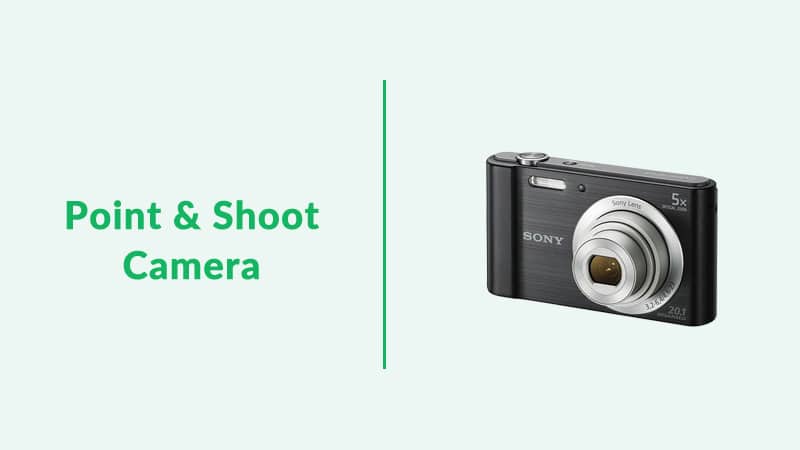
Point and Shoot cameras come with a compact and lightweight form factor.
These cameras feature a fixed aperture, automatic focusing and the lens attached to the frame with optical zoom capability.
There are a number of automatic modes or presets on this camera, which needs you to just click the button and not worry about anything else in order to click a decent picture.
The camera will choose the settings for you and if required the inbuilt flash will turn on depending on the lighting in the environment.
These are the cameras that you can gift to your parents or kids with surety about the ease of use.
Decline of Point and Shoot Cameras
With the advent of smartphones which comes equipped with powerful camera hardware, Point and Shoot cameras have definitely lost its sheen over time.
But the important factor to be noted here is that most of the budget and premium budget smartphones still come with small sensors that lack optical zoom.
So to be fair about the comparison with both of these devices, a standalone Point and shoot camera has its own advantages over the smartphone camera.
Bridge Cameras
Bridge cameras, as the name suggest, acts as the bridge between entry level point and shoot cameras and the DSLR cameras.
These cameras can be considered as the hybrid of both the above mentioned incorporating the best of two worlds with minimal inconvenience.

Bridge cameras are heavier and bulkier than the point and shoot counterparts, but compact than the DSLR cameras.
Bridge cameras are suitable for those who are newbies to the photography field but intend to advance as a professional later.
Most of the bridge cameras in the market offer some or the other kind of manual controls like exposure metering, shutter speeds and ISO tweaking, allowing you to experiment with the settings a bit.
Since these cameras are bigger than the point and shoot cameras, it can afford to house bigger sensors and much more optical zoom capabilities.
Since these cameras come with a fixed, non-interchangeable lens you’ll have to satisfy with what’s on board.
The bridge cameras perform exceptionally better than the point and shoot cameras and can be a great tool for amateur photographers to click amazing quality shots without spending a fortune.
Some of the bridge cameras interestingly come with an insane amount of optical zoom such as the 83x zoom on the Nikon Coolpix P900, which you won’t get even with the pricier DSLR ones.
Mirrorless Cameras
Mirrorless cameras solve one of the main problems that DSLR cameras face – the size factor.
Mirrorless cameras are smaller and often occupy the same size footprint of either point and shoot cameras or bridge cameras without compromising on the quality of the photos it delivers.
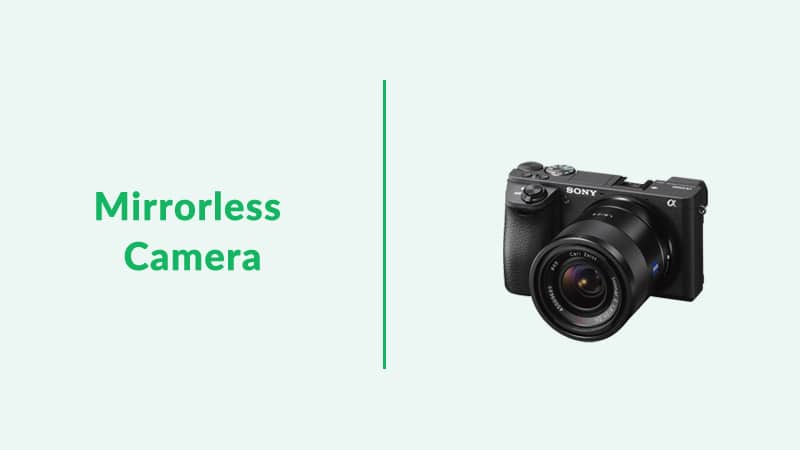
These cameras have a bigger and better sensor than the above-mentioned cameras and have the option for interchangeable lens arrangement.
You are bound to get the full manual options while capturing your clicks with a mirrorless digital camera.
What sets apart a mirrorless digital camera from a DSLR apart from the size difference is that it doesn’t come with a viewfinder.
In the case of a DSLR, the light strikes the viewfinder at first and then falls on the sensor with the help of a mirror.
This optical setup consumes a lot of space and that’s what makes the DSLR bulky and heavy.
In the mirrorless camera, the sensor is always in direct contact with the light. There is no mirror setup inside which makes it compact and lightweight.
As we mentioned earlier, the mirrorless camera can be fitted with interchangeable lenses. There are lenses custom made for mirrorless cameras available in the market.
Advantages and Disadvantages of Mirrorless Cameras
The main advantage of a mirrorless camera is in its lightweight and compact form factor.
These cameras are very portable and are highly versatile to be used as a replacement for expensive DSLR cameras.
Since the flange back distance (the distance between the lens mount and the sensor) is less in the case of mirrorless cameras, you can even use a DSLR lens kit with these cameras provided you have the appropriate lens adapters.
The disadvantage of these cameras is a result of the same advantage it possesses.
The lack of a viewfinder makes the sensors on these devices work full time, leading to much lesser battery life than the DSLR cameras.
DSLR Cameras
DSLR (Digital Single Lens Reflex) cameras represent the pinnacle of photography technology prowess.
These cameras employ the latest and greatest piece of optical technology to provide you with the best possible quality images and videos.
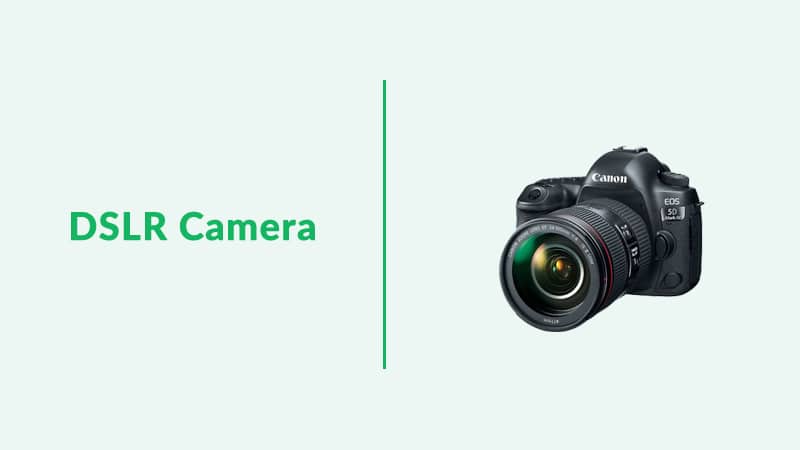
DSLR cameras are best suited for professionals and for those who have a yearning passion for photography and filmography.
Capable DSLR cameras range from Rs.30,000 and can go up to lakhs, depending upon the quality of the internal systems housed inside the frame.
DSLR cameras feature an optical viewfinder that reflects the light back to the sensor with the help of a movable mirror.
Since the size of the sensor can be bigger than most of the mirrorless cameras and all the point and shoot as well as bridge cameras, the quality and resolution of the pictures and videos coming out of a DSLR with be higher.
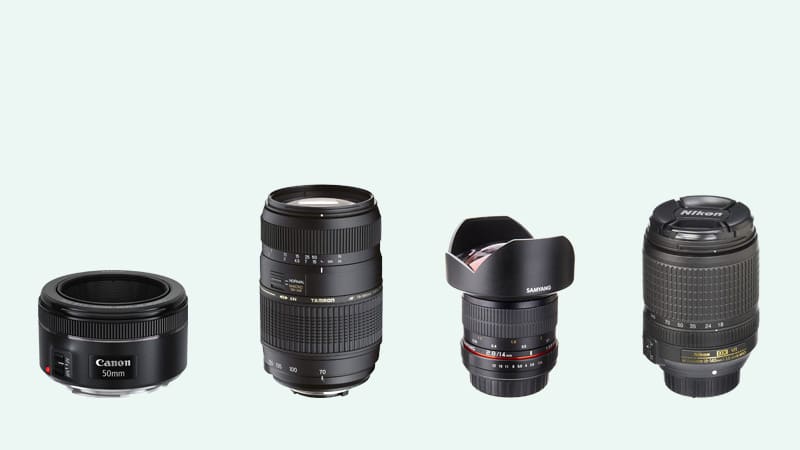
With the help of interchangeable lenses, the focal lengths and zoom capabilities can be extended further for taking close up shots or portrait mode photos with perfection.
And to further explain, DSLRs and mirrorless cameras come with optional Optical Image Stabilization for minimal jerks to have a really smooth cinematic video output.
Action Cameras
Action cameras are a relatively new breed of miniature cameras which comes with extreme portability and ruggedness as its main advantage.

These cameras can be fixed on mounts which can be placed on a helmet, skateboard or even strapped on to your chest for shooting action sequences on the go.
With support for water and dust proof operations, these cameras can be used almost anywhere – underwater or even in the desert storm, unharmed.
Most of the action cameras in the market now support shooting 4K videos up to 60fps. With the advancement in technology, cameras like Sony FDR X3000 comes equipped with optical image stabilization onboard, closely followed by the likes of GoPro Hero 7 with an excellent Electronic Image Stabilization.
Conclusion
This is the basics of digital cameras we’ve covered, just to make you understand the types of cameras depending upon the use cases, catered to an average consumer looking to purchase a camera. We hope it was helpful.
We also have different articles written on our website with definitive buying lists to the best digital cameras in the Indian market, that will help you close in on a product much easier than ever before, provided you have read this article thoroughly.
We are wrapping up the article here for now, and if you feel we’ve left something out of the equation, do let us know in the comment section below.
